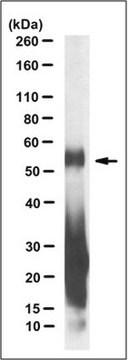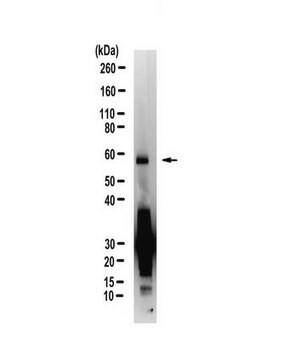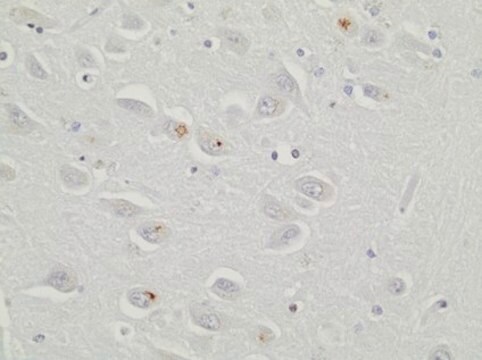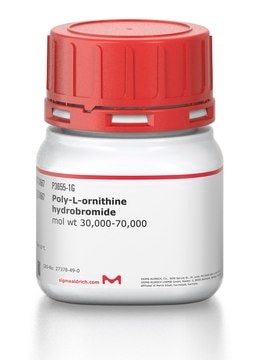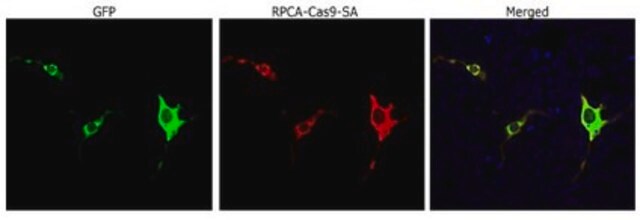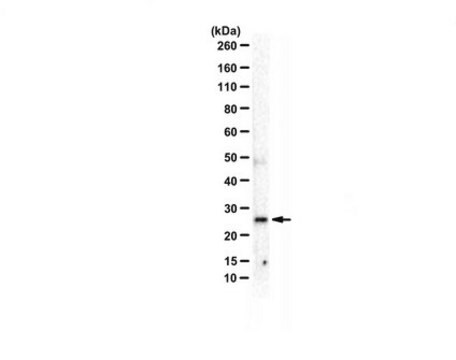ABN1358
Anti-C9ORF72/C9RANT (Poly-GP sense/antisense)
serum, from rabbit
Sinonimo/i:
C9ORF72/C9RANT (poly-GP), alpha-GP-sense/antisense
About This Item
IF
IHC
WB
immunofluorescence: suitable
immunohistochemistry: suitable
western blot: suitable
Prodotti consigliati
Origine biologica
rabbit
Forma dell’anticorpo
serum
Tipo di anticorpo
primary antibodies
Clone
polyclonal
Reattività contro le specie
human
tecniche
immunocytochemistry: suitable
immunofluorescence: suitable
immunohistochemistry: suitable
western blot: suitable
N° accesso NCBI
N° accesso UniProt
Condizioni di spedizione
ambient
modifica post-traduzionali bersaglio
unmodified
Informazioni sul gene
human ... C9orf72(203228)
Descrizione generale
Specificità
Immunogeno
Applicazioni
Immunocytochemistry Analysis: A 1:500 dilution from a representative lot detected C9ORF72/C9RANT (Poly-GP sense/antisense) in V5 -GP transfected HEK293. (Courtesy of Dr Laura P.W. Ranum and Dr. Lien Nguyen from the University of Florida).
Western Blotting Analysis: A representative lot detected C9ORF72/C9RANT (Poly-GP sense/antisense) in Western Blotting applications (Zu, T., et. al. (2013). Proc Natl Acad Sci USE. 110(51):E4968-77).
Immunohistochemistry Analysis: A representative lot detected C9ORF72/C9RANT (Poly-GP sense/antisense) in aggregates found in neurons of the CA and DG regions of the hippocampus (Zu, T., et. al. (2013). Proc Natl Acad Sci USE. 110(51):E4968-77).
Neuroscience
Qualità
Western Blotting Analysis: A 1:1,000 dilution of this antibody detected C9ORF72/C9RANT (Poly-GP sense/antisense) in 10 µL lysate fromHEK293 cells transfected with Flag-GP construct.
Descrizione del bersaglio
Stato fisico
Stoccaggio e stabilità
Altre note
Esclusione di responsabilità
Non trovi il prodotto giusto?
Prova il nostro Motore di ricerca dei prodotti.
Codice della classe di stoccaggio
12 - Non Combustible Liquids
Classe di pericolosità dell'acqua (WGK)
WGK 1
Certificati d'analisi (COA)
Cerca il Certificati d'analisi (COA) digitando il numero di lotto/batch corrispondente. I numeri di lotto o di batch sono stampati sull'etichetta dei prodotti dopo la parola ‘Lotto’ o ‘Batch’.
Possiedi già questo prodotto?
I documenti relativi ai prodotti acquistati recentemente sono disponibili nell’Archivio dei documenti.
Il team dei nostri ricercatori vanta grande esperienza in tutte le aree della ricerca quali Life Science, scienza dei materiali, sintesi chimica, cromatografia, discipline analitiche, ecc..
Contatta l'Assistenza Tecnica.